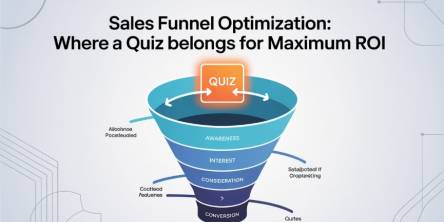SharePoint vs OneDrive: Which Document Management System is Better for You?

Gone are the days when companies would make do with saving and storing their documents on archaic tools such as a flash drive, hard, or some such. While they admittedly worked at the time, the fact remains that they came with their own set of problems. These conventional tools and solutions for document management from the past were typically highly susceptible to risk and more prone to breakdowns and malfunctions than you’d think. But they were used regardless of the problems associated with them because those were the only options back then.
But that doesn’t hold in today’s world. Thanks to the sustained and rapid progression of technology over the years, we have come a long way from relying on such tools for managing documents effectively across a business. And when it comes to document management systems for business, the world is inundated with options and each seemingly as capable the next one. However, the market has its favorites nonetheless: SharePoint and OneDrive. While it is relatively easy to end up with these two names on the shortlist, where do we go from there, i.e., how do we decide between SharePoint and OneDrive. We understand that conundrum all too well, which is why we have put together this quick guide to help you evaluate which one best suits your business’ requirements.
1. OneDrive
a. Advantages:
- One of the critical benefits of OneDrive is that it allows IT teams to enable access to work documents, files, and more via the same tools and functionalities as the staff is accustomed to, albeit within the company’s limits and policies.
- It allows files that are saved on employees’ devices to be backed up on the cloud, thus ensuring the downtime is minimum, if at all.
- It fares well in the context of collaboration, thanks to the co-authoring feature, which means multiple can work on the same file, and they will be able to see changes in real-time.
b. Disadvantages:
- The standard storage for each user is 1TB. For some companies, this can be a massive sore point.
- It does not offer document management features like reporting, auditing, and others.
- It enables external sharing, while that alone isn’t a problem, but the fact that anyone can access these documents without being required to log in is.
2. SharePoint
a. Advantages:
- One of SharePoint’s biggest strength is that it offers a world of options and choices when it comes to both personalizations as well as integration.
- This document management system is highly conducive for scaling, which is further complemented by the ability to tend to a business’ various requirements via just one, customizable package.
- Microsoft has gone the extra mile in the context of security with SharePoint. The A-grade authentication, as well as authorisation standards, means that companies can extensively tailor user access, i.e., specify precisely who can view what and so much more.
b. Disadvantages:
- While it is a very robust solution, the fact remains that it can be quite heavy on the pocket. Say, your company decides to opt for the on-premises intranet, you will end up paying for not only the license but also for customization. And then there’s the infrastructure cost as well.
- Considering the typical expense of adopting SharePoint across the business and also that it necessitates dedicated training, it isn’t a tight fit for companies that are operating at a smaller scale.
We understand that this may be much information to absorb, but we’ll leave you with one final piece of advice: No matter if you choose SharePoint document management system development or any other option, make sure that all stakeholders are on board with that decision.
Similar Articles
Every sales funnel has one core goal: turn attention into revenue as efficiently as possible. Yet many funnels leak value at critical stages—visitors bounce, leads go cold, and sales teams chase prospects who were never a good fit.
Decentralized Finance (DeFi) has transformed how users earn passive income through blockchain-based financial systems. Among its most popular use cases,
Staying organized can feel like a full-time job. Between meetings, deadlines, and personal commitments, it’s easy to get overwhelmed.
Choosing the right GIS mapping software depends on what you need to accomplish. Some platforms cater to developers who want to build custom applications from scratch.
For data intensive industries such as insurance, the global business landscape is undergoing a profound transformation. Thanks to all the relentless technological innovation, this shift presents both significant challenges and unparalleled opportunities for modernization of the insurance sector.
Organizations are always looking for newer technologies to aid their operations. So, this hunt revolves around solutions that offer not only agility and scalability but are also cost-effective.
Not long ago, the idea of multiple AI agents working together, each with a specific role, collaborating to solve problems, felt like science fiction.
In today’s data-driven world, choosing the right business intelligence (BI) platform can make or break your organization's analytics success.
We all know that companies today are no longer limited to a single physical location. Work processes are also no longer strictly isolated.









